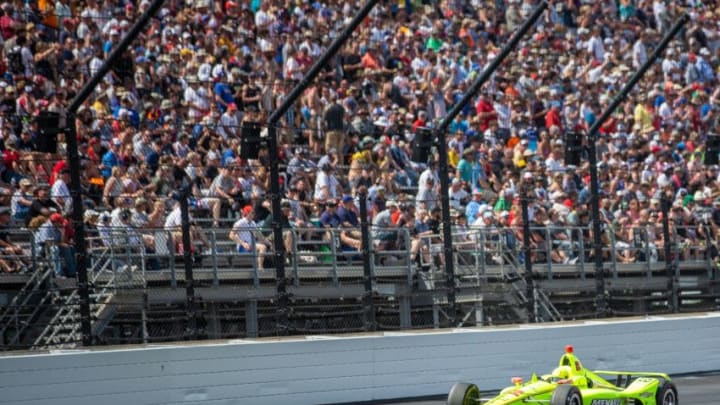IndyCar: Mid-Ohio postponement cancels busiest stretch since 1968
By Asher Fair

IndyCar was slated for a five-race month of August, which included the Indy 500 for the first time ever. This would have capped off the busiest stretch the sport had seen in over five decades. But the Mid-Ohio doubleheader was postponed.
July opened up with an IndyCar race at the Indianapolis Motor Speedway road course on Saturday, July 4 before a doubleheader at Road America on Saturday, July 11 and Sunday, July 12 and then another doubleheader at Iowa Speedway on Friday, July 17 and Saturday, July 18.
August was scheduled to open up with a doubleheader at Mid-Ohio Sports Car Course this weekend on Saturday, August 8 and Sunday, August 9 before the 104th running of the Indianapolis 500 was at Indianapolis Motor Speedway on Sunday, August 23 following a busy weekend of qualifying the week prior.
The doubleheader at World Wide Technology Raceway at Gateway was scheduled to take place on Saturday, August 29 and Sunday, August 30. This would have put the series in position to see back-to-back months with five races, which hadn’t been seen in over five decades.
More from IndyCar
- IndyCar: Two teams with no drivers confirmed for 2024
- IndyCar: Chip Ganassi Racing news hints Alex Palou announcement
- IndyCar: ‘Addition by subtraction’ could pay off in a big way
- Team Penske should make a bold driver signing for 2024
- IndyCar: 5 teams that still have open seats for 2024
But the doubleheader at Mid-Ohio Sports Car Course was postponed to an unspecified date, either in September or October.
Let’s take a look at the historical implications of that postponement.
Before July, IndyCar had not seen five races in a single month since June of 2013, when two races were contested at the Raceway at Belle Isle Park and three other races were contested at Texas Motor Speedway, the Milwaukee Mile and Iowa Speedway.
Prior to June of 2013, IndyCar had not seen a five-race month since the 1969 USAC Champ Car Series season, when there were five races contested in July and six contested in September.
But this year’s two-month stretch, which now features only eight events, was slated to feature a total of 10 races.
IndyCar hadn’t seen more than eight races in a two-month span since 1969.
But even in 1969, no two consecutive months produced 10 races. August and September combined to produce nine, with three during the former and six during the latter.
The 1968 USAC Champ Car Series season is the most recent season to feature a double-digit race total over the course of two consecutive months. June featured five races before July featured six and August featured four.
But to put this in perspective, many of these races back in 1968 and 1969 were only 100-mile races. In fact, one was just a 12.42-mile sprint.
So IndyCar had never seen anything like what we were slated to have seen in July and August, especially considering the fact that the packed Indy 500 practice and qualifying schedule doesn’t even count toward the race total.
Of course, the initial 2020 schedule looked nothing like what it does now. There were originally only two races in July and two races in August. But the many schedule changes caused by the coronavirus pandemic resulted in an absolutely packed summer stretch that had not been seen in open-wheel racing in over a half-century.
Unfortunately, it didn’t pan out.
Next. Top 10 IndyCar drivers of all-time. dark
IndyCar is slated to have the entire month of September off before two races at the Indianapolis Motor Speedway road course on Friday, October 2 and Saturday, October 3 and then the season finale on the streets of St. Petersburg, Florida on Sunday, October 25. However, the doubleheader at Mid-Ohio Sports Car Course could be rescheduled to either month.